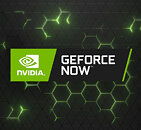
Razer Unveils the Ultra-Lightweight DeathAdder V4 Pro Gaming Mouse
Razer, the leading global lifestyle brand for gamers, today announced the launch of the Razer DeathAdder V4 Pro, the latest evolution of its most iconic gaming mouse. With over 20 million units sold worldwide, the DeathAdder line is renowned for its ergonomic excellence and elite esports performance. The DeathAdder V4 Pro builds on this legacy with next-generation upgrades, developed in close collaboration with top-tier esports professionals and engineered to for the highest levels of competitive play.
Engineered for Elite Performance
The DeathAdder V4 Pro is the first gaming mouse to feature Razer HyperSpeed Wireless Gen-2—delivering an ultra-stable connection, over 63% greater power efficiency, and 37% lower latency than its predecessor. Thanks to this breakthrough in wireless technology and a redesigned dongle optimized for peak performance, it ensures lightning-fast responsiveness at up to 8000 Hz in both wired and wireless modes. All this cutting-edge performance is backed by up to 150 hours of high-performance gameplay at 1000 Hz, giving gamers the endurance they need to stay ahead.
Engineered for Elite Performance
The DeathAdder V4 Pro is the first gaming mouse to feature Razer HyperSpeed Wireless Gen-2—delivering an ultra-stable connection, over 63% greater power efficiency, and 37% lower latency than its predecessor. Thanks to this breakthrough in wireless technology and a redesigned dongle optimized for peak performance, it ensures lightning-fast responsiveness at up to 8000 Hz in both wired and wireless modes. All this cutting-edge performance is backed by up to 150 hours of high-performance gameplay at 1000 Hz, giving gamers the endurance they need to stay ahead.










































































